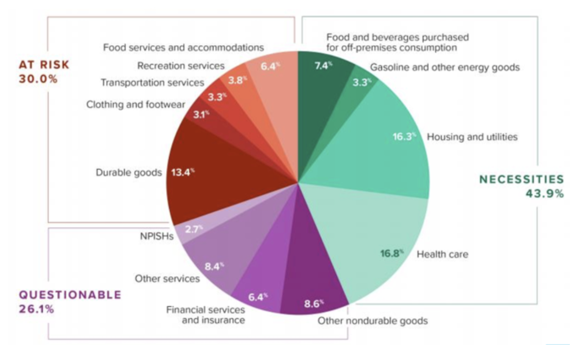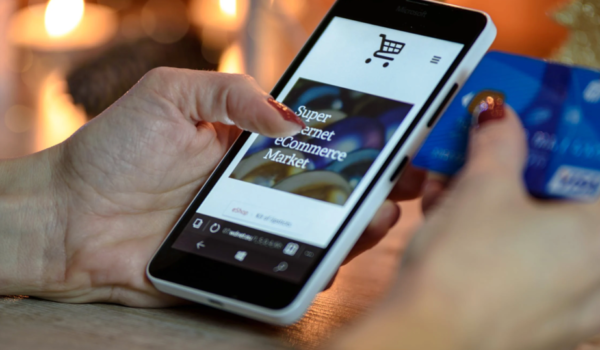There is scarcely a person left that has not felt some effect of the coronavirus pandemic. As our newsrooms continue the essential coverage that keeps citizens safe and informed, we are looking at how this continues to affect our business partners – not just now, but once we all come out the other side.
Keeping a close eye on shopping behavior is something we do anyway. But looking at the data showing how drastically people have changed their preferences and behavior in a short amount of time helps us give dependable guidance to you.
First, let’s take a look at what is most at risk. According to Morning Consult, nearly two-thirds of a typical consumer’s budget is considered “at risk” or “questionable”. And if you look at those slices of the pie, many are pretty small already. Even a fraction of a percentage drop has drastic effects on businesses.

Source: Morning Consult
One silver lining is that in many of those small, discretionary slivers there is an upward trend in e-commerce. According to Attentive, categories like pet supplies, beauty, electronics and apparel have all seen an average of a 23%+ increase in the month of March in online sales. While of course this means that people are buying online instead of in-store, this is really indicative of our main point – people are willing and able to change their shopping habits when it’s necessary.
Our data partner Numerator reported that as of this past week, 32% of consumers say they have increased their spending online for goods they would have normally gone to a store to purchase.

Source: Numerator
Furthermore, 22% report that they shop at stores they wouldn’t otherwise shop and 24% say they are buying products they wouldn’t otherwise buy. This behavior change is, of course, out of necessity but there are many conclusions to draw from that data. Most important of those takeaways is that brand loyalty is expendable. That has really been a trend for the last few year. And big box retailers have known that, given the significant spike in proprietary brands making appearances in Target, Kroger, and Wal-Mart. This is good news for smaller businesses and brands that can fill a void left by the empty shelves at big-box retailers.

